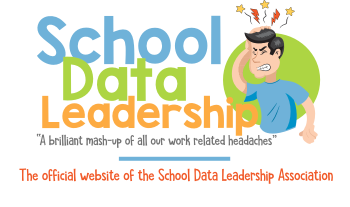Secure community support to sustain existing resources and add new resources that address emerging student needs.
Securing community support to sustain existing resources and add new resources that address emerging student needs is essential for ensuring that schools can effectively meet the evolving needs of their students. Here's an expanded approach to this standard, offering practical strategies and resources for educational leaders to effectively engage with the community:
Assessing Student Needs
-
Data Analysis: Analyze student data, including academic performance, attendance, behavior, and surveys, to identify emerging needs and trends. Tools like student information systems (SIS) and data analysis software can aid in this process.
-
Stakeholder Consultation: Engage with stakeholders, including students, parents, teachers, and community members, through surveys, focus groups, and town hall meetings to gather insights into emerging student needs and priorities.
-
Partnership with Support Staff: Collaborate closely with school counselors, social workers, psychologists, and other support staff to gain a deeper understanding of student needs and develop targeted interventions.
Building Community Partnerships
-
Community Resource Mapping: Create a comprehensive inventory of community resources, including non-profit organizations, businesses, government agencies, and religious institutions, that offer services aligned with emerging student needs.
-
Engagement with Local Organizations: Reach out to identified community organizations to explore potential partnerships and collaborations. Highlight the specific needs of students and the potential benefits of partnership to garner support.
-
Establishing Advisory Committees: Form advisory committees comprised of community leaders, representatives from local organizations, and school stakeholders to provide guidance and support in addressing student needs.
Securing Support for Existing Resources
-
Advocacy Campaigns: Launch advocacy campaigns to raise awareness about the importance of existing resources and the positive impact they have on student success. Use various communication channels, including social media, newsletters, and community events, to disseminate information.
-
Community Fundraising Events: Organize fundraising events, such as charity auctions, benefit concerts, or community dinners, to generate financial support for existing resources. Engage local businesses, civic organizations, and community members in these efforts.
-
Grant Writing and Sponsorship: Explore grant opportunities and sponsorship agreements with local businesses, foundations, and government agencies to secure additional funding for existing programs and services. Develop grant proposals that clearly articulate the need for support and the expected outcomes.
Adding New Resources
-
Needs Assessment Surveys: Administer surveys to students, parents, and teachers to gather input on potential new resources and interventions that could address emerging needs. Use the feedback to prioritize initiatives and allocate resources effectively.
-
Partnership Development: Forge partnerships with community organizations and agencies that can provide new resources and services, such as mental health counseling, tutoring, mentorship programs, or extracurricular activities.
-
Collaborative Program Design: Work collaboratively with partner organizations to design and implement new programs that meet the identified needs of students. Establish clear goals, objectives, and evaluation criteria to ensure the effectiveness of the initiatives.
Monitoring and Evaluation
-
Data Monitoring: Continuously monitor student outcomes and program effectiveness through data collection and analysis. Use student performance data, surveys, and qualitative feedback to assess the impact of existing resources and new initiatives.
-
Feedback Mechanisms: Implement feedback mechanisms to solicit input from students, parents, teachers, and community members on the effectiveness of resources and services. Use the feedback to make data-informed decisions and adjustments as needed.
Promoting Successes
-
Celebrating Achievements: Highlight success stories and positive outcomes resulting from community support and collaboration. Share testimonials, student testimonials, and success metrics through various communication channels to demonstrate the impact of the collective effort.
-
Recognition and Appreciation: Express gratitude to community partners, donors, and volunteers for their contributions to student success. Recognize their efforts through public acknowledgments, awards, and appreciation events to foster ongoing support and engagement.
By implementing these strategies and leveraging community resources, educational leaders can effectively address emerging student needs, sustain existing resources, and foster a supportive and responsive learning environment for all students.
